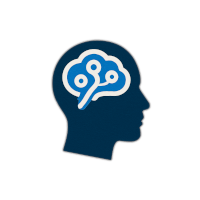AI Agents & Autonomous Systems
Learn how to build, design, and deploy AI agents that can reason and act autonomously
🧐 Understanding AI Agents
AI agents represent a significant evolution in artificial intelligence—systems that can perceive their environment, make decisions, and take actions autonomously to achieve specific goals.
What are AI Agents?
An AI agent is an autonomous entity that exhibits the following characteristics:
- Perceives: It gathers information from its environment through sensors or data inputs.
- Reasons: It processes the perceived information, often using a knowledge base and reasoning engine, to make informed decisions.
- Acts: It takes actions in its environment through actuators or by executing commands to achieve its objectives.
- Learns: Many advanced agents can adapt and improve their performance over time based on experience and feedback.
Key Distinction: Agent vs. Traditional AI
Traditional AI systems typically operate on a request-response basis, processing specific inputs to produce predetermined outputs. They are often passive until invoked.
AI Agents, however, are designed for proactive and continuous interaction. They actively monitor their environment, maintain an internal state, and pursue long-term goals with a degree of autonomy, making decisions and adapting their behavior as circumstances change.
Core Components of AI Agents
While architectures vary, most AI agents incorporate several fundamental components:
1. Sensors
These are the agent's input mechanisms, allowing it to perceive its surroundings. Examples include physical sensors like cameras and microphones, or software sensors like API data feeds and system logs.
2. Actuators
These are the agent's output mechanisms, enabling it to perform actions and influence its environment. Examples range from robotic limbs and motors to software APIs for sending messages or modifying data.
3. Knowledge Base (KB)
The KB stores the agent's information about the world, its domain, and its experiences. This can include facts, rules, procedures, and learned models that guide its reasoning.
4. Reasoning Engine
Often considered the "brain" of the agent, this component uses the information from sensors and the KB to make decisions, derive new knowledge, plan actions, and solve problems to achieve the agent's goals.
5. Learning Mechanism (Optional but common)
This component allows the agent to adapt and improve its performance over time. It can involve various machine learning techniques to learn from data, feedback, or direct experience.
Types of AI Agents
AI agents can be classified based on their complexity, capabilities, and how they make decisions. Here are some common types:
| Agent Type | Description |
|---|---|
| Simple Reactive Agents | Act only based on the current percept, ignoring history. (e.g., a basic thermostat). |
| Model-Based Reactive Agents | Maintain an internal state (model of the world) to track aspects not evident in the current percept. |
| Goal-Based Agents | Have explicit goals and use planning/search to find action sequences to achieve them. |
| Utility-Based Agents | Try to maximize a utility function, choosing actions that lead to the highest expected "happiness" or performance. |
| Learning Agents | Can improve their performance over time through learning from experience or data. |
| Hybrid Agents | Combine multiple approaches, e.g., a reactive layer for speed and a deliberative layer for planning. |
Real-World Applications
AI agents are transforming various industries and aspects of daily life:
- Virtual Assistants: (e.g., Siri, Alexa) help with tasks via natural language.
- Autonomous Vehicles: Self-driving cars and drones navigating complex environments.
- Robotics: Industrial automation, service robots, and exploratory bots.
- Algorithmic Trading: Automated systems executing financial trades.
- Game AI: Intelligent non-player characters (NPCs) in video games.
- Smart Home & IoT: Devices automating home functions based on user preferences.
- Personalized Recommendation Systems: Agents suggesting content or products.
- Cybersecurity: Agents detecting and responding to threats.
